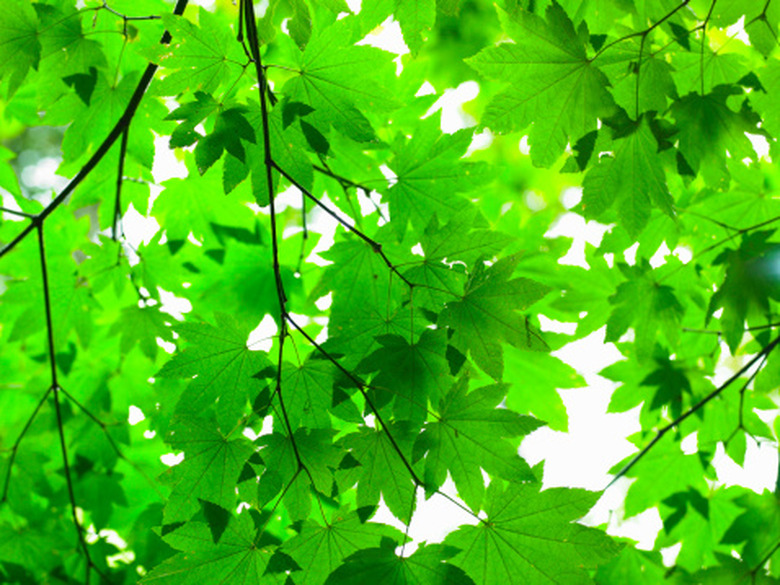Are A Sycamore & A Cottonwood The Same Tree?
Sycamores (Plantanus occidentalis) and cottonwoods (Populus deltoides) are different species of trees. Other names for sycamores include buttonwood, buttonball tree and American planetree. Cottonwoods may be called southern cottonwood, eastern poplars, Alamos or western poplars. Although both prefer riparian areas and are fast-growing, deciduous trees, they are distinguishable by their physical characteristics.
Physical Characteristics
Sycamores are large trees, which can reach a height between 100 to 150 feet. As they age, a sycamore's bark turns from pale white to a mottled brown-gray and has a smooth texture. The leaves are palmate, meaning they resemble a hand with three fingers. Leaves are green in the summer and turn red or brown in autumn. Sycamores produce a yellowish-brown, dry fruit, known as achenes. The fruit has "hairs," which allows the wind to carry it long distances.
Cottonwoods are fast growing trees which have a crown height between 500 and 100 feet. They produce large crowns, up to 75 feet wide. Young trees have pale gray bark which turns darker and forms thick ridges as the tree ages. Cottonwoods have vibrant green, wide, triangular leaves that turn yellow in autumn. Seeds look like cotton clumps and travel easily in the wind.
Growing Requirements
Sycamores prefer moist, organic-rich soils in lowlands or along streams and riverbanks. They often grow in stands of black willows, yellow poplars and maples. Sycamores range from Florida to as far north as southern Ontario. They range west into Texas and Michigan. These trees are susceptible to wind and ice damage.
Cottonwoods are cold-tolerant to hardiness zone 2. Although they are drought-tolerant in areas with high water tables, they prefer moist locations. They grow best in loam or sand tolerate a soil pH between 4.5 and 8.0. Cottonwoods thrive in full sun.
Benefits
Sycamores are excellent shade and landscaping trees. Their tolerance to acidic and saturated soils benefit reclamation sites. Sycamore wood is useful for making floors, boxes, crates, baskets and furniture. Cavities and hollows in sycamore trees provide nesting sites for owls, woodpeckers and even raccoons. Sycamores provide food to songbirds, muskrats, beavers and squirrels. In addition, their roots help prevent the erosion of stream banks.
Cottonwoods are useful as shade trees and windbreaks. Not only do these trees provide food to beavers, mice, rabbits and deer, the hollows in cottonwoods provide shelter to wildlife. This tree's wood is useful as pallets, crates and boxes.
Drawbacks
Both trees are susceptible to fire damage, pests and diseases. In addition, they are both messy plants and drop seeds, fruit, leaves and branches. The roots of cottonwoods can damage foundations, sewers and drainage systems. Some people experience respiratory or skin irritation from sycamore seeds.
